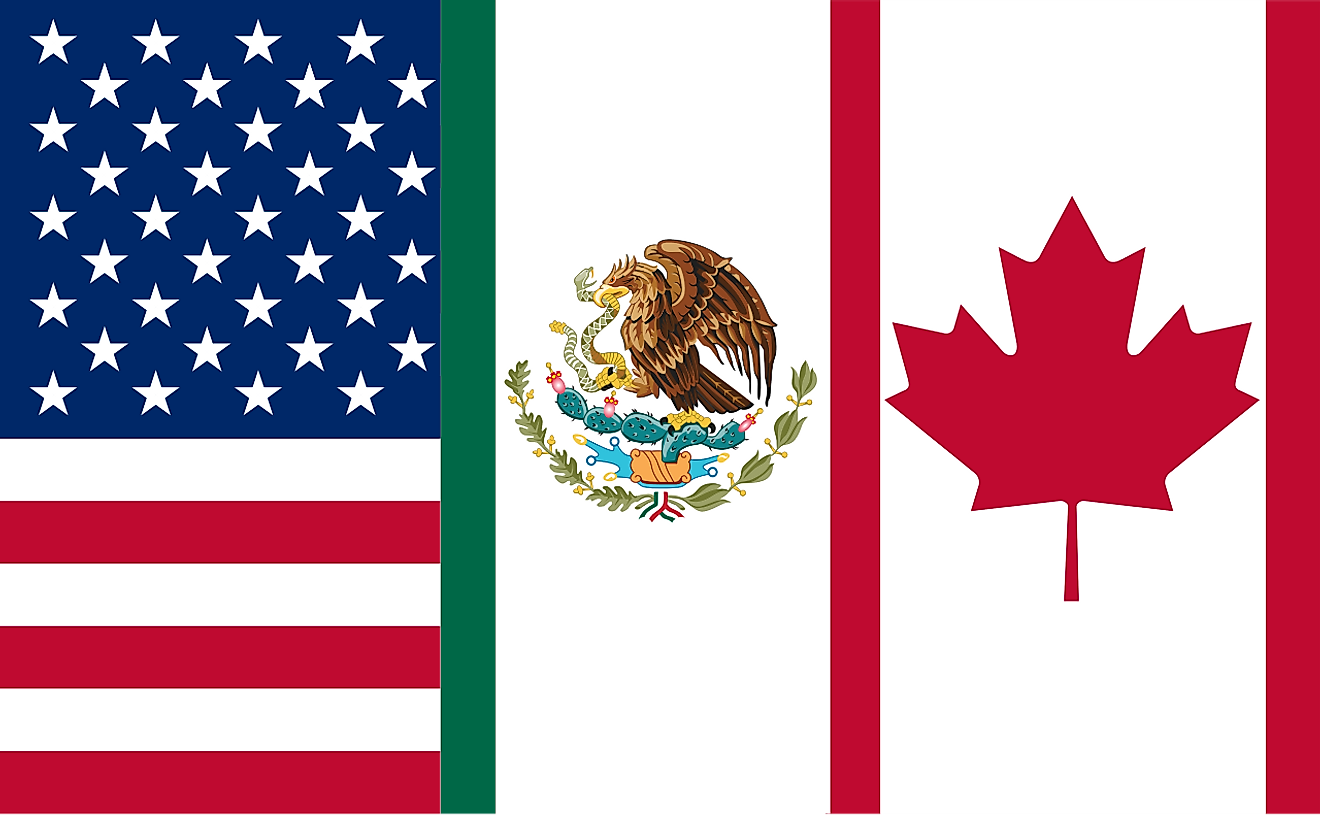The North American Free Trade Agreement (NAFTA)

5. Background and Signing
NAFTA is the North American Free Trade Agreement and has its roots in the 1984 Trade and Tariff Act, which gave the President authority to arrange free trade agreements. In 1988, US President Reagan and Canadian Prime Minister Mulroney signed the Canada-US Free Trade Agreement and in 1991, US President Bush and Mexican President Salinas began negotiating trade liberalization. Canada requested to be included and in 1992, the three country leaders signed NAFTA. The legislative bodies of each country then ratified the amendments, and US President Clinton signed NAFTA into law on December 8, 1993.
4. Support And Accomplishments
Since NAFTA’s inception, it has increased investment opportunities, eradicated trade obstacles, and created trade dispute resolution procedures. With the reduction of trade barriers, the US, Canada, and Mexico have increased trade to $1.14 trillion. NAFTA lowered the cost of Mexican oil imports thus reducing the price of gas which, in turn, decreased the cost of food transportation and grocery bills. Foreign investment among the three countries has also tripled and benefits the banking, manufacturing, and insurance industries.
3. Criticisms and Controversies
One of the biggest issues associated with NAFTA is that Mexican farm workers lost their jobs when the US increased exports of subsidized agricultural products; these products were available at cheaper rates than Mexican crops, particularly corn. US and Canadian workers also lost their jobs when manufacturers moved into lower-cost Mexico where labor is cheaper. This workforce movement gave rise to the maquiladora program which allows northern countries to employ Mexican workers to assemble products for export.
2. Environmental, Human Rights, and Economic Impacts
In line with the criticisms, are the environmental, human rights and economic concerns. The signing of NAFTA did lead to the creation of the North American Agreement on Environmental Cooperation which is responsible for the Commission for Environmental Cooperation (CEC). Despite the CEC’s presence, the Mexican government reports that environmental degradation costs have grown to 10% of the GDP since NAFTA. Increased industrial manufacturing brought with it increased hazardous waste and unsustainable water use. Human rights issues have also increased post-NAFTA. Maquilas now provide jobs to 30% of Mexico’s workforce. Employers in these factories do not ensure labor rights or health insurance; employees work uncompensated overtime and women face discrimination if they are pregnant. The low wages contribute to increasing poverty levels which have also caused increased malnourishment in children. In terms of the economy, the US and Mexico have both lost jobs. The US lost manufacturing jobs when the industry packed up and moved to Mexico and Mexico lost agricultural jobs. The manufacturers that stayed in the US suppressed wages under the threat that they, too, would join the competition in Mexico. However, the economy saw overall wages increase. Governments were also able to reduce spending due to competitive bidding practices.
1. Historical Significance and Legacy
While people and governments everywhere will forever remember NAFTA as a landmark, multilateral agreement that increased trade, its legacy leaves something to be desired. It has turned markets into arenas of cheap, imported goods. To fulfill the constant demand for these cheap products, NAFTA has pushed employers to close companies in search of lower operating costs. Workers everywhere are left fighting to make a living. NAFTA’s legacy, it seems, is one of unfulfilled promises.











